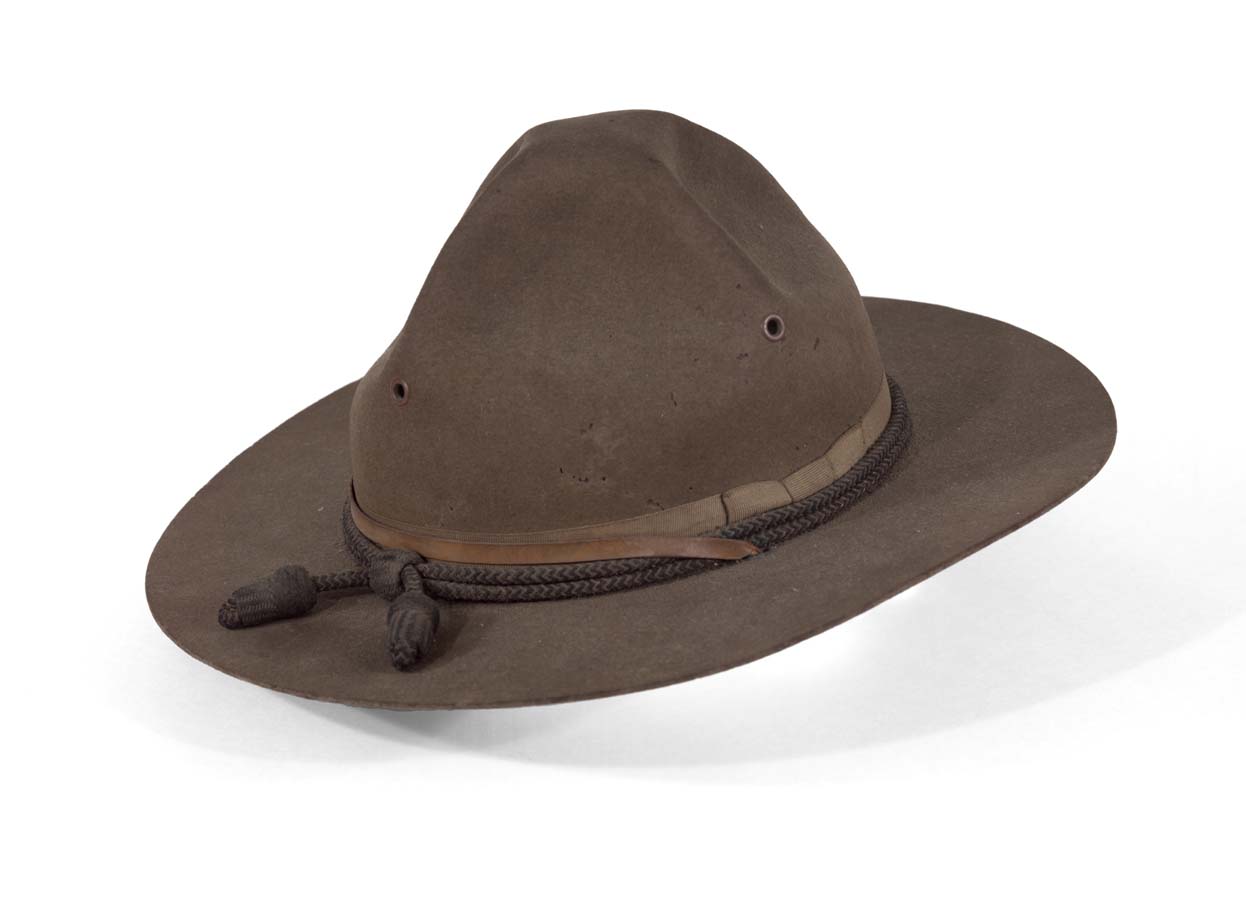|
Campaign Hat.
From the William B. Umstead World War I Collection
North Carolina Collection Gallery, University of North Carolina Chapel Hill |
|
View Options
Return to Menu Page (ca. 7K)
|
Title: |
Campaign Hat. |
Date: |
1917. |
Call Number: |
CK.621.39 North Carolina Collection Gallery, University of North Carolina Chapel Hill |
Physical Description: |
CAMPAIGN HAT, formed wool felt, broad brim with high, pinched crown with four grommets or air holes, made by the Marshall Frost Company, Columbia, South Carolina, 1917; thin leather strap extends from hole in brim to front of brim, band and black double-cord with two decorative, fused end tassels encircling base of crown; interior leather sweatband inscribed in ink (faded) "Lt. Wm. B. Umstead," oval-shaped label stamped in gold in sweatband "Trade Mark / The Marshall Frost Co. / Columbia, S.C."; another label embossed in the leather sweatband is a shield with "John B. Stetson / No. 1 / Quality"; brim measures 13.5" (34.3 cm) deep, 12" (30.5 cm) wide, height to crown 5.25" (13.3 cm) ; very good condition, though has small moth-eaten areas on crown and moderate but shallow vermin damage to underside of brim. |
Topics: |
|
Subjects: |
Military paraphernalia -- United States -- History -- 20th century. Soldiers -- North Carolina. Umstead, William Bradley, 1895-1954. United States. Army -- Equipment -- Catalogs. United States. Army -- Uniforms -- Catalogs. United States. Army. Machine Gun Battalion, 317th. University of North Carolina at Chapel Hill. Library. North Carolina Collection -- Catalogs. World War, 1914-1918 -- Equipment and supplies -- Catalogs. World War, 1914-1918 -- Equipment and supplies -- History. World War, 1914-1918 -- North Carolina. |
Notes: |
Although there were no American divisions composed entirely of North Carolinians during World War I, there were two divisions that included many Tar Heels: the 30th "Old Hickory" Division and the 81st, nicknamed the "Wildcat" Division. The Wildcat Division was among the first national divisions organized by the United States Army and was composed predominantly of troops from North Carolina, South Carolina, and Tennessee. Much of the division's mobilization and training took place at Camp Jackson outside Columbia, South Carolina. It is likely that it was there where Lieutenant Umstead obtained this particular campaign hat. According to its label, the hat was produced or marketed by a firm located in Columbia. |
Funding from the State Library of North Carolina supported the electronic publication of this title.
Return to North Carolinians and the Great War Home Page
Return to The North Carolina Experience Home Page
Return to Documenting the American South Home Page

